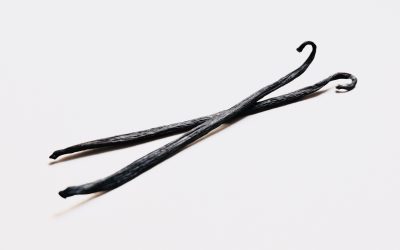There are many different types of pastry that serve very different purposes. Knowing which one to use for what outcome is one of the most essential things to know when baking.
Below I’m going to try and keep it short and sweet laying out the main different types of pastry with what they are for, how to make them and the main things to remember to get the best results.
Sweet pastry
As with others below, sweet pastry can be made a few different ways and there are classic pastries that fall under this category but have their own names. This is just because different applications require different qualities. For example, small mince pies are best made with rich butter heavy sweet pastry to give flavour and also a crumbly texture, but in a large custard tart you also need the pastry to have strength without having to make the pastry too thick. This would require a little less fat, compromising slightly on the flavour but also making the tart easier to line, preventing cracks and making sure you don’t have an oven full of spilt custard tart mix.
To see my recipes for the two most common types see here:
Shortcrust pastry
This tends to refer to savoury pastry used to line things such as quiches and savoury tarts for canapes and starters.
There is no sugar so it can be cooked for longer or at higher temperatures than sweet pastry to make sure the bottom is crisp. When making quiches you will want to line your tart shells with the pastry and then blind bake first.
To blind bake a tart shell just cover the inside with 2 layers of clingfilm (both ways like a cross so it hangs over all the sides). Then fill the protected shell with rice up to the top. Place that in the oven at 180 degrees (don’t worry the clingfilm wont melt) until the edges of the pastry are golden and then remove the rice and clingfilm.
Once the tart has cooled slightly, brush the inside with egg wash and bake again at 170 degrees until the whole tart is lightly golden and crisp. The egg wash will create a waterproof layer to keep the tart shell from going soggy, even if filled with liquid mix such as quiche mixture.
Here is my recipe for shortcrust pastry. It is a nice pastry to work with as long as you rest it well in the fridge after rolling. It’s also dead simple to make. Once made you can also freeze the dough for a month as long as you wrap it well in clingfilm.
Ingredients
- 200g Flour
- 100g Butter
- 60g Water
- 4g Salt
Method
Place everything but the water into a freestanding mixer and use the paddle attachment to rub the butter into the flour and create a breadcrumb consistency.
(This can also be done with your fingertips)
Add the water and mix until it forms a smooth dough
Wrap in cling film and leave to rest in the fridge for at least an hour before use.
Hot water crust pastry
Hot water crust pastry is the kind you see on pork pies and game pies. This isn’t seen as much now with lighter eating habits. However, for this kind of thing nothing compares. The pastry is great at standing strong (due to the high-water content), holding in moisture and has a beautiful even colour when done properly. It can also hold in a lot of weight, making it perfect for tall pies with lots of filling.
It gets its name from the fact the water and fat in the recipe are heated first and then added to the flour. In most other pastry you need to keep it as cold as possible and rub the flour in gently. Adding the water and fat hot allows for more water retention in the pastry. This means when it evaporates in the oven you are left with a much stronger and crisper crust than you would have with other pastries.
For a reliable “Great British chef’s” recipe for hot water crust see here
Choux pastry
Choux pastry is my favourite type of pastry to make and eat. You can get extremely creative with this one and it is the base of a huge amount of classic pastries.
Choux does take a while to master so it is very satisfying when you get it right. The recipe below is originally from ‘Patisserie’ by William Curley it’s the one I always use and i’ve never had a bad batch from it (so far, fingers crossed)
The key to getting perfectly round choux pastry is by using a disk of craquelin. This is a thinly rolled mix of coarse sugar, flour and butter which wraps around the choux as it bakes. Keeping the shape nice and round. It is critical that you use craquelin if you want to get restaurant quality choux.
In the pastry school lessons I go through choux and craquelin step by step and the lessons will show you exactly what you can do with it. From casual desserts to luxury afternoon tea creations visit the membership tab now to sign up to all lessons for free.
Basic Choux pastry
Ingredients
- 125ml Water
- 125ml Milk
- 125g Unsalted butter
- 12g Caster sugar
- 162g Plain flour
- 2g Salt (1 pinch)
- 250g Whole eggs (about 5) beaten
Bring the water, butter, sugar and salt to the boil in a large saucepan on a medium heat
Take the pan off the heat and add the flour
Stir well with a spatula before returning to the heat on low
Cook the mixture until the dough leaves the sides of the pan (about 2-3 minutes for this size batch)
Take off the heat and transfer to a mixing bowl to cool down for about 5 minutes
Either by hand or using the paddle attachment on a free standing mixer, beat in the eggs gradually.
Spoon the choux pastry into a tray and cover with cling film. Chill in the fridge until firm before piping.
Puff pastry
The uses for puff pastry are so vast in the savoury kitchen and the pastry kitchen that it has to be one of, if not the most used pastry. Perfect puff pastry should be dark in colour and crisp once cooked, with thin defined layers.
There are 3 types of puff pastry or ‘feuilletage’ as it is called in French. These are Classic puff pastry (pate feuilletee) Rough or quick puff (feuilletage rapide) and inverted puff (pate feuilletee inverse)
The first type is made by folding a block of butter (the beurrage) into a dough (the detrempe). It is then rolled out and folded over to create layers. This is done 6 times to create layers of dough and butter.
When the pastry is cooked, the butter between the dough layers melts. This then creates an air gap which expands and makes the puff pastry rise.
Inverted puff pastry
Inverted puff pastry is the same, except the butter is placed on the outside to start with and the dough is encased, rather than the other way around. For this method the butter has flour added to make it easier to roll.
For rough/ quick puff the method is sped up massively but the end product is not as accurate or even in it’s rising. This is fine if you need a base, biscuits or are making pastry that doesn’t need to rise high or evenly.
The butter is rubbed into the mix to create small flecks of butter and then the dough is turned to create layers. This follows the same principle as the other puff pastries but you only need to roll the dough out 4 times, the original prep Is also much quicker to do
For recipes on how to make these with full instructions and ingredients, I advise you check out ‘Patisserie’ by William Curley which also has some great ideas on how to use them.
Suet pastry
Suet pastry is used for thinks such as steak and kidney pudding and also dumplings for stew. It is best steamed and although it is soft, when cooked the pastry can hold a lot of mixture comfortably.
To cook puddings with suet pastry you need to roll the pastry out thick and line a pudding basin that has been lined with greaseproof paper. Leave some overhang on the lip around the top of the basin and fill with the mixture. Then top with a disk of the pastry. Press the disk into the pastry lip and then cut off the excess. The basin is then topped with greaseproof paper and a damp t-towel before being tied down with string and steamed.
Here is my recipe for a basic suet pastry
- 400g Plain flour
- 200g Suet
- 20g Baking
- 8g Salt
- 280ml Cold water
For more recipes and on demand lessons with our chefs click here to get a free month!


